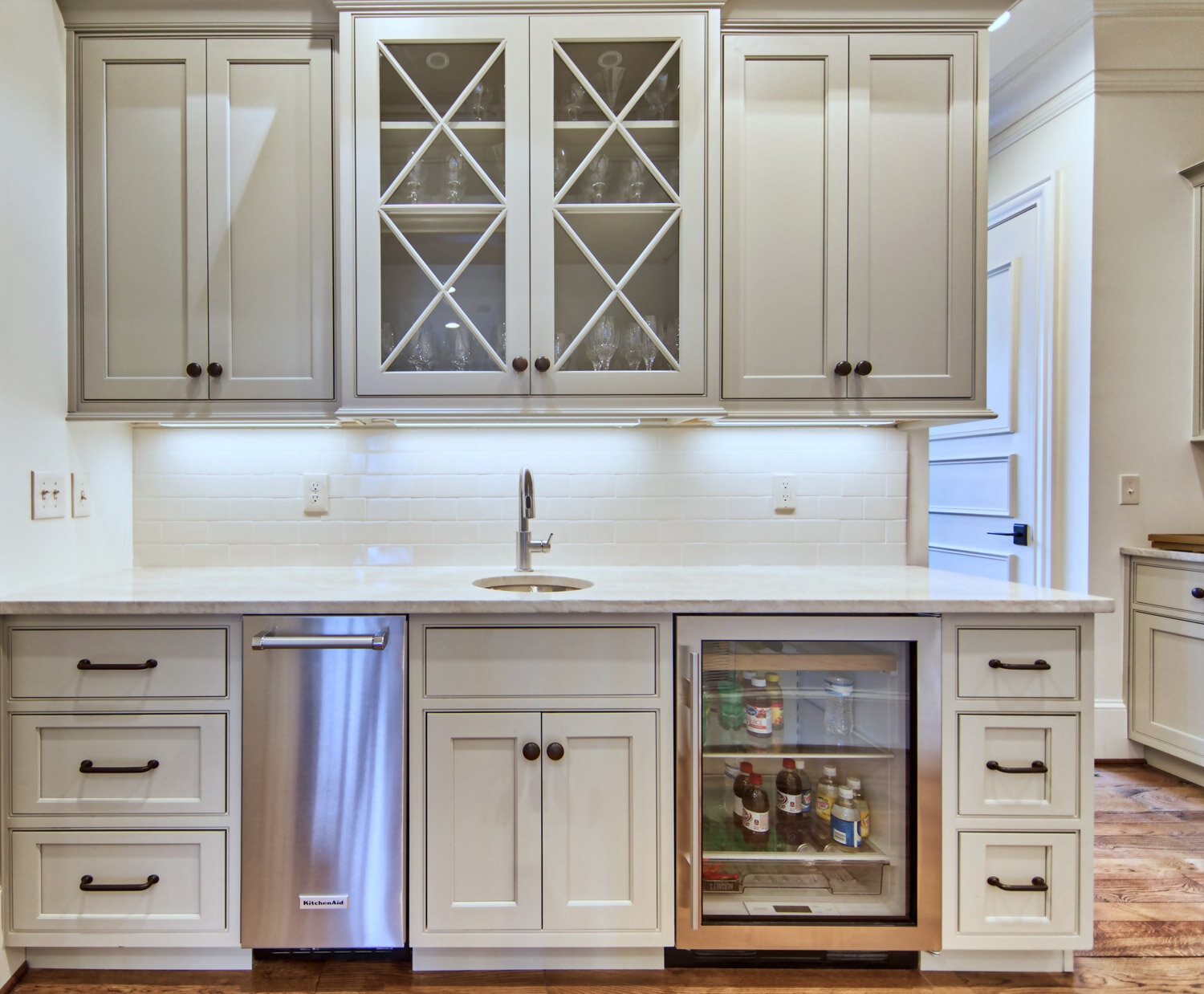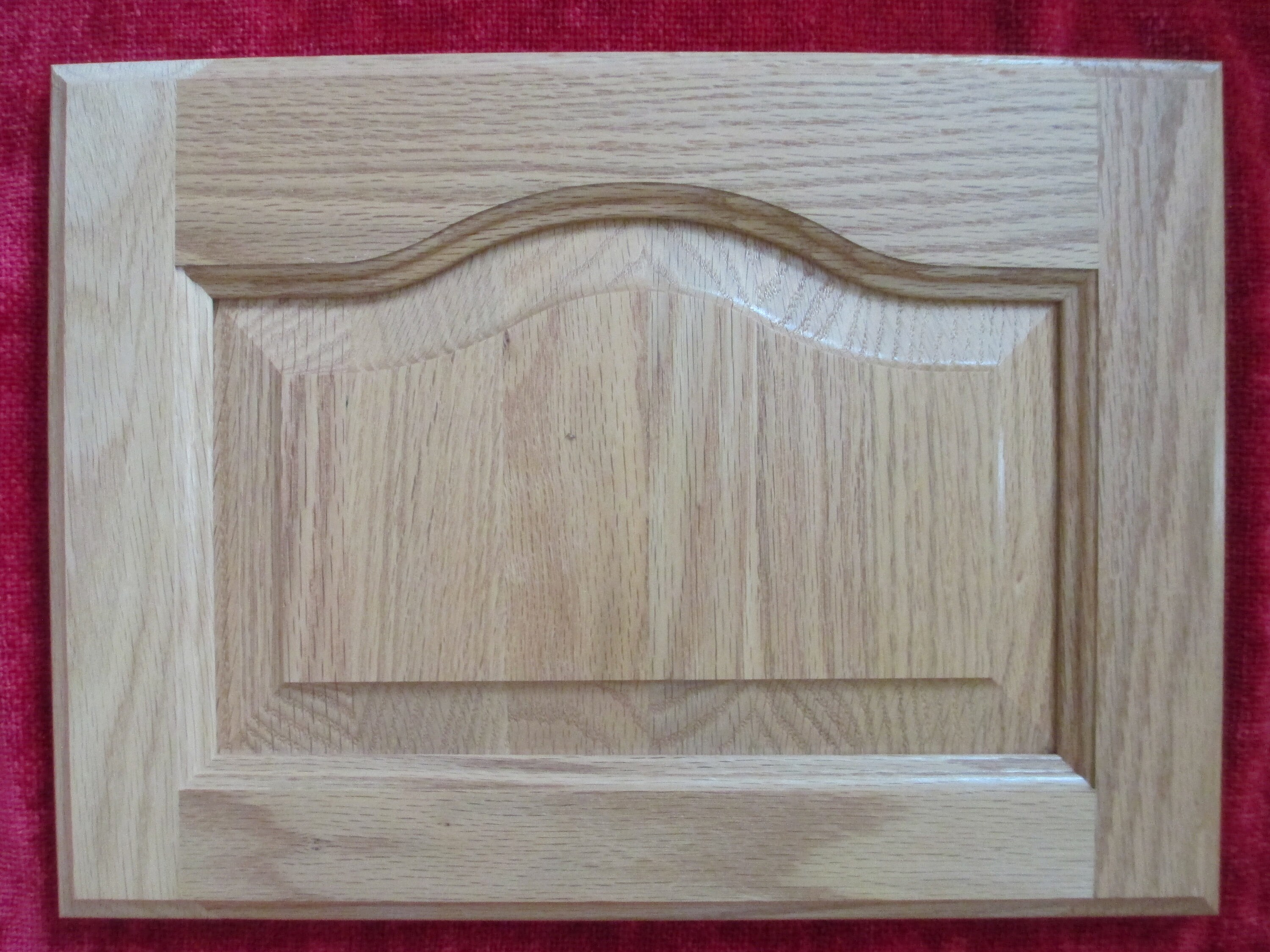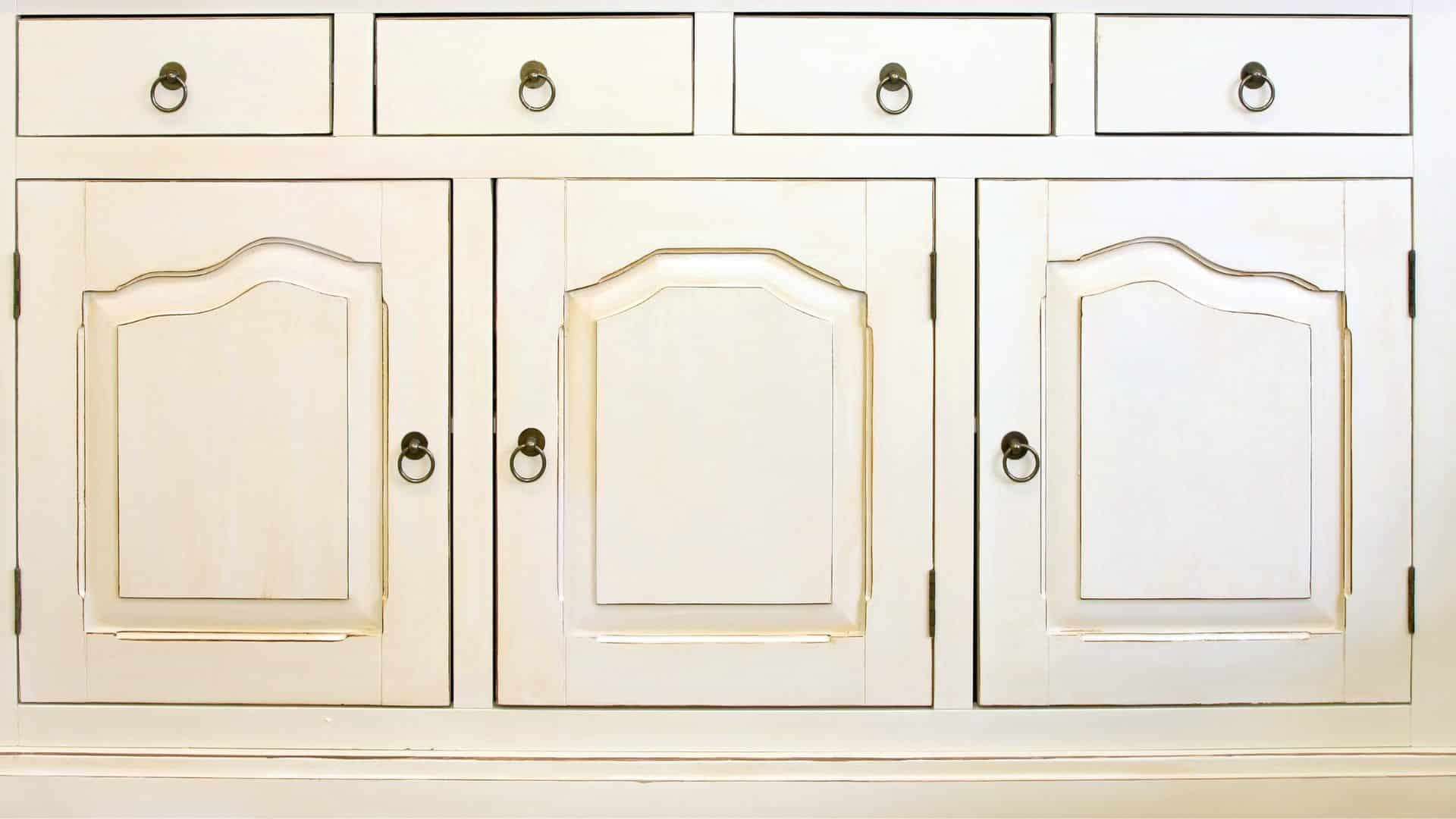Design & Aesthetics of Flat Panel Cathedral Cabinet Doors

Flat panel cathedral cabinet doors offer a clean, contemporary aesthetic that can complement a wide range of kitchen and bathroom styles. Their minimalist design, characterized by a flat panel framed within a raised or recessed frame, provides a versatile canvas for showcasing the beauty of various wood types and finishes. The simplicity of the design allows the natural grain and color variations of the wood to take center stage, creating a sophisticated and timeless look.
Visual Appeal of Flat Panel Cathedral Cabinet Doors in Various Wood Types and Finishes
The visual impact of flat panel cathedral doors is significantly influenced by the choice of wood and finish. Rich, dark woods like cherry or walnut lend a sense of luxury and warmth, highlighting the subtle grain patterns with a deep, lustrous finish. Lighter woods such as maple or birch offer a brighter, more airy feel, allowing the grain to be more prominent, particularly with a natural or light stain. A painted finish, on the other hand, provides a completely different aesthetic, offering a smooth, uniform surface and allowing for a wider range of color choices to complement the overall design scheme. The grain pattern, while still present, becomes less of a focal point. For instance, a white painted flat panel cathedral door provides a crisp, clean look, perfect for a modern or minimalist kitchen.
Comparison of Flat Panel Cathedral Doors with Other Cabinet Door Styles, Flat panel cathedral cabinet doors
The following table compares flat panel cathedral doors with other popular styles, highlighting their key differences in terms of aesthetics and cost:
| Style | Material Options | Visual Impact | Cost Considerations |
|---|---|---|---|
| Flat Panel Cathedral | Solid wood, veneer, MDF; wide range of finishes (paint, stain) | Clean lines, versatile, emphasizes wood grain (if stained), modern or traditional depending on finish | Mid-range to high, depending on wood type and finish |
| Raised Panel | Solid wood, veneer; typically stained finishes | Traditional, classic, ornate, emphasizes wood grain | Mid-range to high, depending on wood type and complexity of panel design |
| Shaker | Solid wood, veneer, MDF; wide range of finishes | Simple, clean lines, minimalist, versatile | Mid-range, generally less expensive than raised panel or intricate cathedral designs |
Detailed Description of a Specific Flat Panel Cathedral Cabinet Door Design
Consider a flat panel cathedral door crafted from solid cherry wood with a rich, medium brown stain. The frame is slightly recessed, creating a subtle shadow line that enhances the depth and dimension of the door. The cherry wood’s characteristic reddish-brown hues and subtle grain patterns are beautifully showcased by the stain. The overall effect is one of understated elegance and sophistication. For hardware, brushed nickel knobs or cup pulls would complement the warm tones of the cherry wood, creating a harmonious and visually appealing contrast. Alternatively, black hardware could offer a more modern, dramatic look. The choice depends on the desired aesthetic and the overall design of the kitchen or bathroom.
Manufacturing & Construction of Flat Panel Cathedral Cabinet Doors

Creating flat panel cathedral cabinet doors involves a meticulous process, blending traditional woodworking techniques with modern manufacturing precision. The final product showcases both the beauty of the materials and the skill of the craftsman. This section will delve into the specifics of material selection, construction, and the creation of the signature cathedral arch.
Flat panel cathedral cabinet doors – The manufacturing process begins with careful material selection and progresses through several key steps to achieve the desired aesthetic and structural integrity. Each stage demands precision and attention to detail.
Materials Used in Construction
The choice of materials significantly impacts the final look, durability, and cost of the cabinet doors. Several wood types and other materials are commonly employed, each with its own set of advantages and disadvantages.
- Solid Wood: Hardwoods like oak, maple, cherry, and walnut are popular choices. They offer exceptional durability, rich grain patterns, and the ability to accept various finishes. However, solid wood is expensive and can be susceptible to warping or cracking if not properly treated and maintained. Oak, for example, offers a classic look and excellent strength, while cherry boasts a warm reddish hue that deepens with age. Maple provides a cleaner, lighter look.
- Medium-Density Fiberboard (MDF): MDF is a cost-effective alternative to solid wood. It offers a smooth, consistent surface ideal for painting or veneer application. However, it lacks the natural grain and character of solid wood and is less durable, making it more susceptible to damage. It’s a good choice when a consistent finish is paramount.
- Veneer: Veneer is a thin layer of high-quality wood applied to a less expensive substrate like MDF or plywood. This allows for the aesthetic appeal of expensive hardwoods at a lower cost. However, veneer can be easily damaged and is not as durable as solid wood. A walnut veneer on an MDF core, for instance, provides a luxurious appearance at a more manageable price point.
Construction Techniques for the Cathedral Arch
The distinctive “cathedral” effect is achieved through precise joinery and shaping. The process requires careful planning and execution to ensure structural integrity and a seamless aesthetic.
- Template Creation: A precise template is created to guide the shaping of the arch. This template dictates the exact curve and dimensions of the cathedral arch, ensuring consistency across multiple doors.
- Arch Cutting: The arch is cut using specialized woodworking machinery like a CNC router or a skilled craftsman using hand tools. This stage requires extreme precision to achieve the smooth, even curve of the arch.
- Frame Assembly: The frame of the door is assembled, usually using mortise and tenon joinery or dowel joinery for strength and stability. The frame provides the structural support for the flat panel and the arch.
- Panel Insertion: The flat panel is carefully inserted into the frame. This may involve rabbeting or dadoes cut into the frame to precisely hold the panel in place.
- Finishing: The final stage involves sanding, priming, and painting or staining the door to achieve the desired finish. This process enhances the beauty of the wood and protects it from damage.
Applications & Integration of Flat Panel Cathedral Cabinet Doors

Flat panel cathedral cabinet doors, with their clean lines and sophisticated simplicity, offer a surprising versatility in design applications. Their inherent elegance allows seamless integration into a wide range of interior styles, from the sleek minimalism of modern kitchens to the warm rustic charm of a country-style home. This versatility extends beyond the kitchen, offering unique opportunities for enhancing the aesthetic appeal of bathrooms, libraries, and other living spaces.
Kitchen Layouts Showcasing Flat Panel Cathedral Cabinet Doors
The clean lines and understated elegance of flat panel cathedral doors lend themselves beautifully to diverse kitchen designs. Their adaptability allows for customization through hardware choices and paint colors, allowing them to fit seamlessly into both traditional and contemporary aesthetics. Consider these three examples:
- Modern Minimalist Kitchen: Imagine a kitchen bathed in natural light, featuring sleek, white flat panel cathedral cabinets. The minimalist aesthetic is enhanced by the absence of ornamentation, allowing the clean lines of the doors to take center stage. Integrated appliances and minimalist hardware further contribute to the overall sense of spaciousness and order. The subtle texture of the wood grain, visible through the flat panel design, adds a touch of warmth without compromising the modern feel.
- Traditional Shaker-Style Kitchen: In contrast, consider a traditional kitchen featuring flat panel cathedral cabinets painted a warm, creamy white. The simple, unadorned style of the doors complements the classic shaker aesthetic. Brass or brushed nickel hardware adds a touch of elegance, while open shelving provides a space for displaying cherished china and cookbooks. A warm, wood-toned island contrasts beautifully with the white cabinets, adding depth and visual interest.
- Rustic Farmhouse Kitchen: Here, imagine a rustic kitchen with flat panel cathedral cabinets finished in a distressed, dark wood stain. The natural grain of the wood is highlighted, creating a warm and inviting atmosphere. Black iron hardware adds a touch of industrial chic, while open shelving displays rustic pottery and vintage kitchenware. A large, farmhouse-style sink and exposed wooden beams further contribute to the overall rustic charm.
Integration of Flat Panel Cathedral Doors in Various Rooms
Beyond the kitchen, flat panel cathedral doors offer exciting design possibilities. Their adaptability allows for seamless integration into diverse spaces, creating a cohesive and stylish look throughout the home.
In a modern bathroom, flat panel cathedral cabinets in a high-gloss white finish paired with sleek chrome fixtures create a clean, spa-like atmosphere. The reflective surfaces amplify the light, making the space feel larger and more luxurious.
A library or study can benefit from the understated elegance of flat panel cathedral doors in a rich, dark wood stain. The simple design complements the quiet sophistication of a book-filled room, providing ample storage for books and other items without overwhelming the space.
Interior Design Styles Complementing Flat Panel Cathedral Doors
Three distinct interior design styles particularly benefit from the incorporation of flat panel cathedral doors:
- Modern Farmhouse: This style blends the clean lines of modern design with the rustic charm of a farmhouse. Flat panel cathedral cabinets in a light, neutral color (like off-white or a soft gray) are ideal. These pair well with natural materials like wood and stone, creating a warm and inviting atmosphere. The color palette should be neutral, with pops of color in textiles and accessories. Think muted greens, blues, and creams.
- Transitional: Transitional design bridges the gap between traditional and contemporary styles. Flat panel cathedral cabinets in a medium-toned wood stain, such as walnut or cherry, provide a classic foundation. Hardware choices can range from simple knobs to more ornate pulls, depending on the desired level of formality. The color palette should be balanced, incorporating both warm and cool tones. Think muted grays, creams, and browns, accented with pops of jewel tones.
- Mid-Century Modern: This style emphasizes clean lines, simple forms, and natural materials. Flat panel cathedral cabinets in a light wood veneer or a neutral lacquer finish work perfectly. The focus is on functionality and simplicity, with minimal ornamentation. The color palette should be restrained, with a focus on natural tones and muted colors. Think browns, creams, and greens, with pops of mustard yellow or teal.
